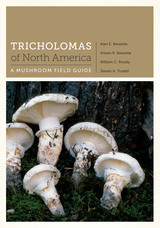Plant Allometry: The Scaling of Form and Process
University of Chicago Press, 1994
Paper: 978-0-226-58081-4 | Cloth: 978-0-226-58080-7
Library of Congress Classification QK731.N54 1994
Dewey Decimal Classification 581.31
Paper: 978-0-226-58081-4 | Cloth: 978-0-226-58080-7
Library of Congress Classification QK731.N54 1994
Dewey Decimal Classification 581.31
ABOUT THIS BOOK | TOC | REQUEST ACCESSIBLE FILE
ABOUT THIS BOOK
Allometry, the study of the growth rate of an organism's parts in relation to the whole, has produced exciting results in research on animals. Now distinguished plant biologist Karl J. Niklas has written the first book to apply allometry to studies of the evolution, morphology, physiology, and reproduction of plants.
Niklas covers a broad spectrum of plant life, from unicellular algae to towering trees, including fossil as well as extant taxa. He examines the relation between organic size and variations in plant form, metabolism, reproduction, and evolution, and draws on the zoological literature to develop allometric techniques for the peculiar problems of plant height, the relation between body mass and body length, and size-correlated variations in rates of growth. For readers unfamiliar with the basics of allometry, an appendix explains basic statistical methods.
For botanists interested in an original, quantitative approach to plant evolution and function, and for zoologists who want to learn more about the value of allometric techniques for studying evolution, Plant Allometry makes a major contribution to the study of plant life.
Niklas covers a broad spectrum of plant life, from unicellular algae to towering trees, including fossil as well as extant taxa. He examines the relation between organic size and variations in plant form, metabolism, reproduction, and evolution, and draws on the zoological literature to develop allometric techniques for the peculiar problems of plant height, the relation between body mass and body length, and size-correlated variations in rates of growth. For readers unfamiliar with the basics of allometry, an appendix explains basic statistical methods.
For botanists interested in an original, quantitative approach to plant evolution and function, and for zoologists who want to learn more about the value of allometric techniques for studying evolution, Plant Allometry makes a major contribution to the study of plant life.
See other books on: Botany | Form | Niklas, Karl J. | Process | Scaling
See other titles from University of Chicago Press






























